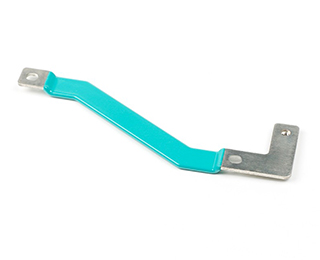2025-02-15 14:37:45
Copper Bus Bars are essential components in power distribution systems, providing a reliable and efficient way to conduct electricity. They are widely used in electrical panels, switchgear, substations, and industrial power systems due to their high conductivity, durability, and heat resistance. This article explores the key roles Copper Bus Bars play in power distribution systems and why they are preferred over other materials.

Copper Bus Bars serve as primary conductors in electrical distribution systems, efficiently transmitting power from the main source to various electrical components. Their high electrical conductivity minimizes energy losses, ensuring stable and consistent power flow across the network. Compared to cables, Copper Bus Bars provide a more compact and organized power distribution solution.
One of the main advantages of copper bus bars is their ability to handle large amounts of current. The current-carrying capacity of a copper bus bar depends on its size, thickness, and installation method. Due to copper's excellent conductivity, it can transmit high electrical loads with minimal resistance, making it an ideal choice for industrial and commercial applications.
Copper bus bars provide a streamlined and space-saving solution for power distribution. Unlike traditional wiring systems that require extensive cable management, bus bars offer a compact and efficient layout. This is particularly important in modern electrical enclosures, where space optimization is crucial for maintenance and system expansion.
Power distribution systems generate heat due to electrical resistance. Copper bus bars help manage heat dissipation effectively, reducing the risk of overheating. Their superior thermal conductivity allows heat to spread evenly, preventing localized hotspots that can cause insulation breakdown or electrical failures. Additionally, copper bus bars are highly resistant to temperature fluctuations, making them ideal for environments with varying thermal conditions.
Copper bus bars are highly durable and can withstand mechanical stress, vibrations, and external impacts. This makes them suitable for demanding environments such as power plants, factories, and renewable energy systems. Their rigid structure also reduces the risk of accidental disconnections or failures that can occur with traditional wiring methods.
Voltage drop is a common issue in power distribution systems, especially in large-scale installations. Copper bus bars minimize voltage drop by providing a low-resistance path for electrical flow. This ensures that the end devices receive a stable voltage supply, improving system efficiency and reducing energy waste.
Copper bus bars can be customized in various shapes and sizes to meet specific power distribution requirements. They can be designed with different thicknesses, coatings, and insulation layers to enhance performance and protection. This flexibility allows engineers to tailor bus bars for applications ranging from low-voltage electrical panels to high-voltage substations.
Safety is a critical factor in electrical systems, and copper bus bars contribute to a safer power distribution network. Their high conductivity reduces the risk of overheating, while their non-combustible properties lower the chances of electrical fires. Additionally, copper bus bars can be coated or insulated to provide extra protection against short circuits and environmental factors.
Copper bus bars are widely used in various power distribution systems, including:
Electrical Switchgear: Used in circuit breakers, contactors, and distribution boards.
Industrial Power Systems: Found in factories, refineries, and heavy machinery power supply networks.
Renewable Energy Systems: Essential in solar power plants and wind energy installations.
Data Centers: Provide efficient power distribution for critical IT infrastructure.
Commercial and Residential Buildings: Used in electrical panels for safe and reliable power distribution.
Transportation Systems: Found in electric vehicles, trains, and aerospace applications.